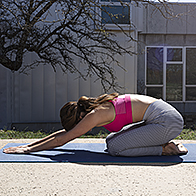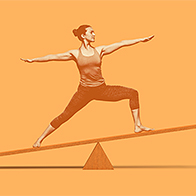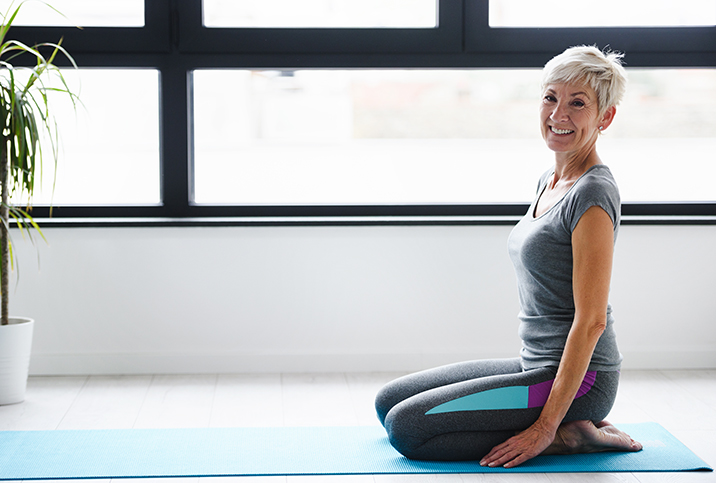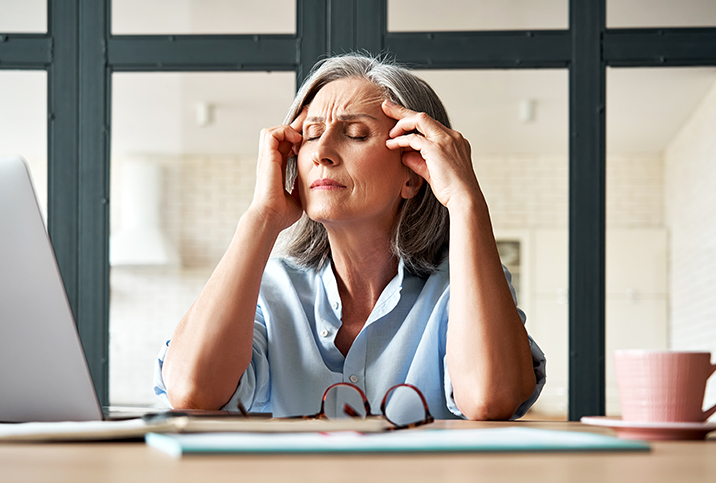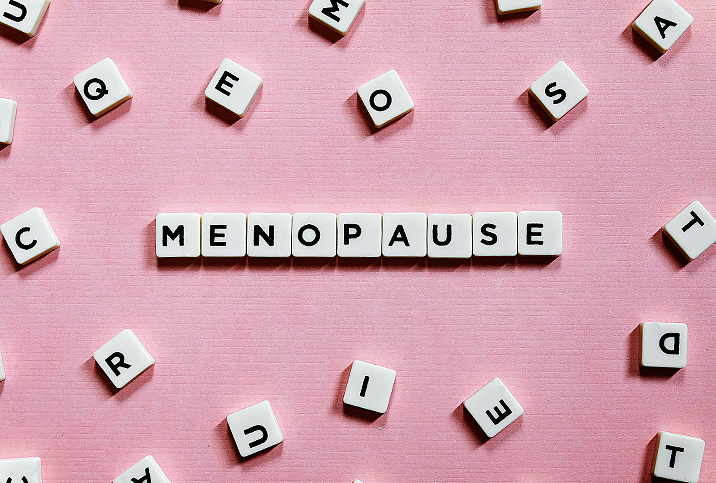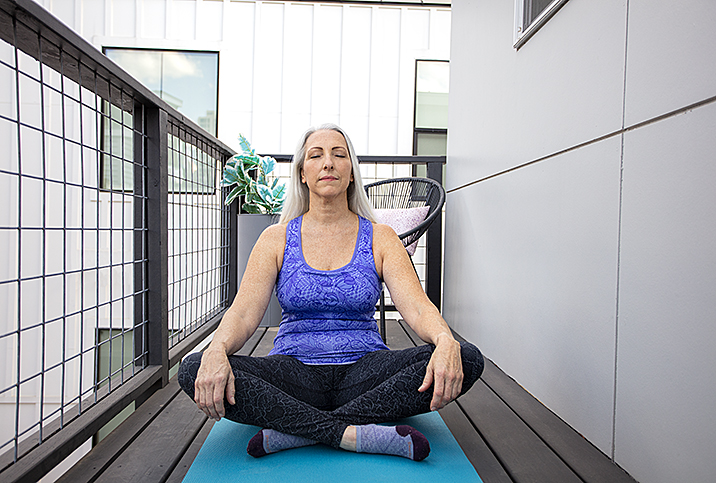Menopause Is Tough—Yoga May Help
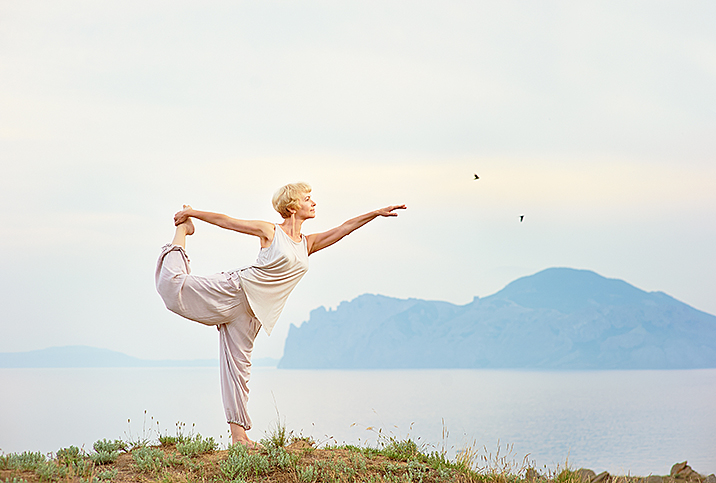
The menopausal transition comes with many physical, mental and emotional symptoms. Yoga, which incorporates movement, breathwork and meditation, can help manage these symptoms and relieve some of the discomfort.
"Yoga affects every part of the body. It's not just that we're moving the body, you are also working with the nervous system, the brain, the lungs and the digestive system," said Libby Stevenson, a London-based yoga teacher who specializes in yoga for menopause. "You have the perfect combination of menopause, with lots of symptoms happening at the same time, and yoga, which can address many of them."
Physically, women often experience hot flashes (also called hot flushes) and sleeplessness during menopause, and then there are mental aspects, including increased stress and anxiety.
"You also have to contend with the emotional aspects of midlife, like children leaving home, an empty nest, aging parents and coming to a crossroads in our careers or relationships," Stevenson said.
Yoga, a well-being practice for body and mind, can allow time to process and work through emotions during periods of change.
"Yoga does not appear to decrease hot flashes but is certainly beneficial for improving mood and sleep. Yoga improves muscle strength, flexibility and balance," said Emily Hu, M.D., an OB-GYN and medical director at Evernow, a company in San Francisco dedicated to women's health care. "Yoga is weight-bearing exercise, which is helpful for bone density."
Yoga is also an accessible and appealing form of movement for people experiencing menopause because it is low or no impact.
Add yoga practice to your menopause toolkit
While yoga can help you manage symptoms, it is not a replacement for menopause hormone therapy (MHT), also known as hormone replacement therapy (HRT).
"Yoga does not alter actual hormone levels in the body," Hu said, noting it can be a useful addition. "I think of yoga as a great complement to other menopause therapies, like hormone therapy, to be done in parallel to optimize health."
Yoga can help you build your emotional toolkit, giving you tools to feel more in control and connected.
"With yoga, we learn awareness and can identify when the symptoms arise and how to manage them," Stevenson said. "If you are experiencing a hot flush or getting overwhelmed, the minute you can sense it, you can step in with a breathing technique or a restorative pose."
Certain poses may help with various symptoms. The child's pose, where you kneel down, lower your torso forward and extend your arms in front of you on the mat, can help aid digestion. Legs up the wall, a pose where you lie down and put your legs up against a wall, can help with sleeplessness and anxiety. Restorative poses like these can be beneficial to combat tiredness and low energy levels, while also offering you time and space for yourself.
"It allows introspective reflection that you might not get from other forms of exercise because they're so go-go-go and there's no time to think," Stevenson explained.
Breathwork and meditation can also provide tools for navigating menopause. The cooling breath, where you breathe in through either your rolled tongue or pursed lips, is intended to help women feel cooler during hot flashes, while other breathing exercises may help you feel calmer. Mindfulness and meditation can lead to improvement in anxiety, depression and pain scores, according to a 2020 study published in the Irish Journal of Psychological Medicine.
Where to begin
The average age for menopause is 51, but the menopausal transition—when symptoms, including hot flashes and sleep disturbances, first begin—can start several years before menopause occurs. Listening to your body and what it needs is key.
"It is important to listen to your body and not overdo things, especially if the poses and positions are completely new to you," Hu said. "There is some controversy as to whether certain poses, such as spine twisting, might be riskier for women in the older age group. Always talk to your yoga instructor about physical and health concerns before starting a practice."
For women with specific medical issues or injuries, talk to both your doctor and yoga teacher about what will work for you. Good teachers will offer modifications and options.
"Yoga can be done by anyone at any age," Stevenson said. "You can pick and choose the things that work for you, which might be breathing exercise or meditation or specific movements."
You can find general yoga classes and menopause-specific teachers both online and in person. Online classes may appeal to you if you are new to yoga or don't want to socialize, while in-person classes can help foster community and illustrate you are not alone in your experience.
When it comes to choosing a class, Stevenson recommended starting with a gentle or beginners' class if you are new to yoga.
"You can do every form of yoga if it suits you, but if you are experiencing hot flushes, a style like vinyasa or hot yoga might not be the best one for you. I would start gentle and ease into it," she said. "Try not to get discouraged if you can't touch your toes or need to bend your knees in certain poses. Yoga is a practice, and touching your toes doesn't matter anyway."







